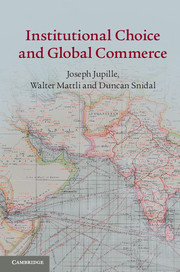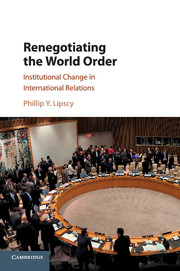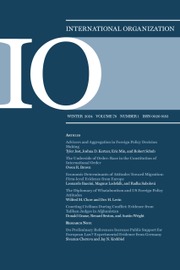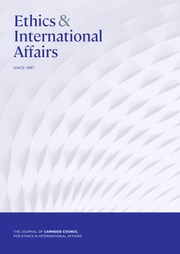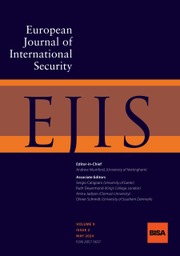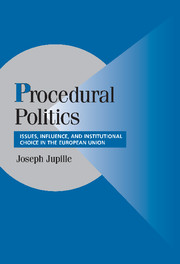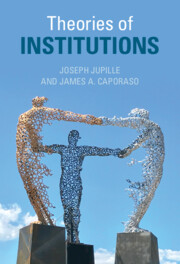Institutional Choice and Global Commerce
Why do institutions emerge, operate, evolve and persist? 'Institutional Choice and Global Commerce' elaborates a theory of boundedly rational institutional choice that explains when states USE available institutions, SELECT among alternative forums, CHANGE existing rules, or CREATE new arrangements (USCC). The authors reveal the striking staying power of the institutional status quo and test their innovative theory against evidence on institutional choice in global commerce from the nineteenth through the twenty-first centuries. Cases range from the establishment in 1876 of the first truly international system of commercial dispute resolution, the Mixed Courts of Egypt, to the founding and operation of the General Agreement on Tariffs and Trade, the World Trade Organization, and the International Accounting Standards Board. Analysts of institutional choice henceforth must take seriously not only the distinct demands of specific cooperation dilemmas, but also the wide array of available institutional choices.
- Offers an original theory of institutional choice, addressing a central debate in social science
- Offers an application to the history of global commerce
- Both the theory and the empirical historical material are presented in an accessible way, to appeal to students as well as specialists
Reviews & endorsements
"Jupille, Mattli, and Snidal have written a pathbreaking book on the politics of institutional choice relating to global commerce. Developing a novel approach grounded in bounded rationality, the authors demonstrate why the process of institutional change is often piece-meal, disjointed, and inefficient judged by standards of global efficiency." - James Caporaso, Professor of Political Science and Director of the European Union Center for Excellence, University of Washington, Seattle
"Jupille, Mattli and Snidal provide us with one of the most cogent and comprehensive accounts of institutional choice and change to date. Melding together historical institutionalism with more rationalist accounts of politics, the book explains why institutional reform is difficult and should not be expected under ‘normal’ conditions. This is critical reading for all scholars of international relations." - Judith Goldstein, Janet Peck Professor of International Communication and Professor of Political Science, Stanford University
"The authors provide a novel theoretical approach to a world of proliferating international institutions that frequently underperform. They illuminate institutional creation, persistence, and change in the face of a constantly evolving global agenda." - Miles Kahler, University of California, San Diego
"In this interesting and rich new book, Jupille, Mattli and Snidal stake out a theoretically-principled approach to international institutions between pure rational design and pure path-dependency. In their theory, actors are boundedly rational and usually rely on existing institutions or modify them slightly, even when the institutions are suboptimal. But, as the authors show, there are specific, predictable circumstances when they will try to craft new institutions to meet new problems. This clear, readable analysis weaves together theory and empirical tests to shed new light on why institutions persist, why new ones are built, and how states select and use international institutions." - Charles Lipson, Peter B. Ritzma Professor in Political Science, University of Chicago
Product details
September 2013Paperback
9781107645929
265 pages
228 × 152 × 12 mm
0.44kg
10 b/w illus. 8 tables
Available
Table of Contents
- Part I:
- 1. Introduction: institutional choice and global commerce
- 2. International institutional choice: cooperation, alternatives, and strategies
- 3. Building Theseus' ship: why the ITO failed, the GATT succeeded, and the WTO emerged
- Part II:
- 4. Creating the first international court of commercial dispute resolution: the Mixed Courts of Egypt
- 5. Commercial complexity and institutional choice in the GATT era
- 6. Institutional choice in global accounting governance
- Part III:
- 7. Conclusion: overview and institutional theories compared.

